For everyone
Bill of Sale: Dick
DCHS Collections Documents of Enslavement A Fishkill man named Dick is sold by James Slight to Thomas Parker October 30, 1801 Witnessed by John Beckwith.
Posted in: 18th Century, African Heritage, For everyone

In Person.Business Award
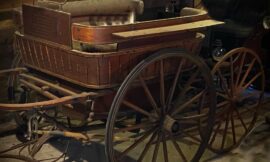
June 1, 2025
2025 Historic Preservation & Awards CelebrationSunday, June 1 3:00 to 5:00 pm Open house4:00 pm Awards & brief comments271 River Road North, Wappinger Falls, NY 12590Tickets: $100/pp Sponsorships: $500 Tickets include wine, drinks, and food from Simply Gourmet. Don’t miss this exciting event! Check out photos from last year! *Prefer to write a check? Mail to: Dutchess County Historical Society. 6282 Route 9, Rhinebeck NY 12572 DCHS has a long tradition of spotlighting people and organizations that inspire local history best practices. Here are some of this year’s awards and recipients: 2025 Historic Preservation Award Recipient It is a great pleasure to honor Mr. Dick Lahey as the recipient of this year’s prestigious Historic Preservation Award. His stewardship of an unparalleled collection of carriages and subject expertise is commendable. He generously opens both his historic home and vast carriage collection, and will personally take us on a tour of both. Learn more about the various awards and honored recipients: Become a sponsor of this year’s Preservation Awards and Celebration event to gain enhanced visibility for your business while supporting the preservation of our community’s rich history. Partner with us today! The sponsorship cost of $500 includes two tickets to the event! Email Bill Jeffway with any questions.
Posted in: For everyone
2024 Year In Review
By Bill Jeffway, Executive Director We are proud to report a banner year on all fronts at DCHS. Our first full year in our new location has raised our visibility and improved access to the entire dynamic and varied “society” of our members, donors, business sponsors, collections donors, and growing paid staff and volunteers. Finances Regarding the $103,000 operating budget for 2024: We expect our 2024 breakeven operating expense goal will be met on December 31. We do tend to have some very last minute gifts which can make all the difference! We have nearly doubled our income from endowments. Through the generosity and leadership of Rob and Sue Doyle, and those they inspired to give, DCHS has almost doubled the amount of income we can rely on annually from endowments. The Doyle Endowment Fund, in excess of $200,000 at the Community Foundations of the Hudson Valley, now supports DCHS in addition to the longstanding Denise M. Lawlor Fund, also at the Community Foundations. Our online auction, in its third year, broke prior records by generating in excess of $25,000 after expenses. This is roughly double what we had come to expect from our annual gala dinners before COVID. Through the generosity of item donors (there were 155 lots) 124 bidders turned into 64 winners. We are grateful for the generosity of AAR Auctions who donate their platform, time, expertise and buyer’s fees. Our spring Historic Preservation Celebration and Awards income broke any prior event income by a factor of two. Over 150 tickets were sold and a record number of businesses were sponsors. Above all, we had the opportunity to celebrate and thank three generations of the Hill family who continue to support DCHS, and who hosted us at their extraordinarily historic home. Firefighting Has Been a Big Focus Among our most visible work this year has been telling the stories of those involved in the essential service of firefighting. Prompted by a significant collections gift from the Rhinebeck Fire Department, combined with existing collections, and a great deal of interest from the local DCHS Vice Presidents representing the cities and towns of the county, firefighting is the topic of the forum section of the DCHS 2024 Yearbook (expected to be published in March 2025). We developed the traveling exhibition, Firefighting in Dutchess County: a Greater Calling, in partnership with the Rhinebeck Fire Department and the Firefighting Museum of Dutchess County. The exhibition was featured at the inaugural opening of the museum at the Dutchess County Fair in Rhinebeck. Please let us know if you would like to borrow the exhibition for a school, library, firehouse, or other public space. Above: Inset shows the exhibition opening at DCHS Rhinebeck among images and stories presented on banners and digital presentations. The exhibition is designed to travel. Public Engagement Another high-profile exhibition and series of programs was related to the celebration of the 200th anniversary of Revolutionary War Major General Lafayette’s local visit. In 1824, as the United States approached its 50th anniversary (the way we approach the 250th anniversary today) Lafayette’s progressive views on the abolition of slavery, the role of women in society, and attitudes toward Indigenous peoples and the impoverished, among other views, gave us the chance to use Lafayette as a kind of litmus test of progress of the realization of American ideals. This turned into our coming to understand the extraordinary story of local persons, like the free Black couple Tom & Jane Williams of the town of Washington. They named their son, Lafayette Williams, shortly after the visit in 1827. The Bard College playwright, DN Bashir, turned this story into a short play performed at the FDR Presidential Library & Museum in September. In addition to the background talk given at the FDR Presidential Library & Museum, the narrative Why Lafayette Endures was presented as four classes at both Bard and Vassar College Lifetime Learning Institutes. Above: Inset shows, left to right, Chuck Schwam, American Friends of Lafayette Executive Director; Aaron Morton who performed as Tom Williams; Bill Jeffway, Executive Director, DCHS; Alexis Braxton as Jane Williams; DN Bashir, lead artist; Michael Halbert as Lafayette; Patti Maclay, National Co-Chair, AFL Farewell Tour Bicentennial Committee. At the anniversary performance September 16 at FDR Presidential Library & Museum. DCHS Trustee and Civil War specialist Dr. Michael Boden continued his series of Civil War talks, A Long & Fatiguing Campaign: The 150th New York Regiment in the Atlanta Campaign can be viewed at DCHS Virtual Event Space. DCHS Trustee David Turner drew from his own vast image collection to present How the Automobile Changed the Hudson Valley Landscape through Vintage Postcards, also available online. The Executive Director’s series for Black history month continued with Free Black Communities and Maritime Adventure Before the Civil War. Collections There is nothing as fundamental as our responsibility to be stewards of thousands of important documents, photographs, clothing and textiles, and objects. Our new location with its open bigger and environmentally controlled space, has allowed for better management and access. The greatest contribution comes from the appointment of Collections & Archives Manager Aidan Chisamore, who will move to a full time position in the New Year. In terms of items themselves, some highlights of new acquisitions include a DeLaval separator, a new-found Caroline Clowes painting, photos of Poughkeepsie in the 1888 blizzard, and a 1706 deed important to the settlement of Rhinebeck. Above left to right: Aidan Chisamore, Collections & Archives Manager, is responsible for the care, preservation, and management of collections. Cosette Veeder-Shave volunteers in collections data entry and management. Charlotte Hampton, Vassar ’25 (Art History), is a volunteer this semester through Vassar’s Office of Community Engaged Learning which has grown into a reliable and important source of talent for DCHS. Publications & Publishing We expect to publish the DCHS 2024 Yearbook in March of 2025 and continue to expand print on demand through Amazon books. We are grateful to the Northern/Southern Dutchess News / Beacon Free Press which hosts our
Posted in: For everyone

Healing with Plants: The Thomsonians of Dutchess County (1820-1850)
We use such balms as have no strife, With Nature nor the Laws of Life; With blood our hands we never stain, Nor poison men to ease their pain. The Poughkeepsie Thomsonian [1842] Now mostly forgotten, this motto once represented one of the most prominent health crazes of the 19th century. The poem advertised the Thomsonian (or “Botanic”) system of medicine in which doctors challenged conventional medical practice, instead recommending natural plant-based cures. While largely ineffective, these remedies captivated public attention, something we are all too familiar with in an age of health influencers and digital cures. Dutchess County, particularly Poughkeepsie, had a strong voice in the Thomsonian movement. This philosophy created a vibrant sub-culture within the County’s medical community for more than two decades, receiving state and national attention. Dr. Samuel Thomson (1769-1843), the movements founder, worked as an herbalist and botanist in rural New Hampshire. In the summer of 1790, Thomson’s wife Susanna suffered a life-threatening illness that conventional medicine was unable to cure. Turing to a plant-based remedy, Susanna eventually recovered. The following decades, Thomson developed his new medical system, testing various cures on his neighbors and children. In 1822 he released the New Guide to Health, or, Botanic Family Physician, which outlined natural remedies to common alignments. Above: Portrait of Dr. Samuel Thomson, Founder of the Botanical Health Movement. The image appears in the 1835 edition of his New Guide to Health. Thomson and his followers cultivated a personal system of bodily health in which medicine targeted the root of the problem rather than treat its symptoms. These “cures” ranged from specific activities such as the famous Thomsonian steam bath in which a patient drank a mix of cayenne pepper and laxatives while sitting in a sauna, to common herbal medicines. Ardent Thomsonianists publicly denounced doctors who practiced blood-letting and used harmful or toxic drugs such as Opium, Laudanum, and the mercury solution Calomel. These cures purported to solve illness without invasive procedures. Through natural substances—only compounds easily derived from plants—they promoted a holistic view of the human body, targeting both physical and emotional unwellness. The historic News Paper Collection in the Dutchess County Historical Society’s archive, replete with signs of this system, shows the range of these Thomsonian remedies. One notice, included in an 1836 issue of Poughkeepsie Journal advertised “syrup of Liverwort,” “Cephalic Snuff,” and “Concentrated Syrup of Sarsaparilla” all made in Thomsonian fashion with “medicinal herbs, extracts, and ointments.” Another, published in an 1841 issue of the Poughkeepsie Telegraph, claimed that all-natural vegetable pills sold in every town in Dutchess would cure any fever, “Bilious Cholic, Dypensia, heart burn, and Female Weakness.” These local examples aptly demonstrates both the range of uses and the variety of material claimed by the Thomsonianist. Through cures like this, the movement attempted to empower individual health. Under the Thomsonian system, patients had full control over the administration of treatments. Informally trained practitioners and local Thomsonian publications could recommend cures that could be purchased at Thomsonian stores, but nothing was prescribed. Thus, easily applied and widely applicable cures had the greatest appeal. The movement grew as stories of miraculous cures spread throughout the county. Outside of New England, New York had the largest community of Thomsonianists, and Poughkeepsie functioned as a locus for the state’s Thomsonian movement during its formative years. Indeed, as the Poughkeepsie Eagle noted in 1837, the city was quickly becoming the meeting place of Thomsonian medical conferences and the State’s Thomsonian Medical Society. The most prominent local Thomsonian was Thomas Lapham (b. c.1780). Lapham ran a clinic, store, and school for the new systems treatments on the North end Catherine Street in Poughkeepsie. In May of 1838 Lapham along with local businessman A. H. Platt printed the inaugural issue of the Poughkeepsie Thomsonian a bi-monthly newspaper that detailed, remedies, clinics, and testimonies. Each issue of the Poughkeepsie Thomsonian offered to “Let a knowledge of the healing art be diffused among the people,” a nod to the broader movement’s desire to make medical knowledge public. The publication’s readership rapidly expanded, distributing thousands of papers, reflecting the movement’s success in the county with dozens of practicing offices and several Thomsonian societies. The zenith of Dutchess Thomsoniansm can be seen in medical publications where the Thomsonians of Dutchess County gain national attention. In 1840, the editors of the Poughkeepsie Thomsonian—facing harsh criticism over the validity of the medical system—called for the creation of an informative almanac. Originally used as a tool to chart stellar movements and weather, by the 19th century almanacs were full of informative articles that often looked at personal health, farming, and history. Their reputation for credibility made them the most popular serial publication after newspapers. Lapham and Platt called for a national publication based in Poughkeepsie titled the United States Thomsonian Almanac (or Poughkeepsie Thomsonian Almanac). In his appeal, Lapham described almanacs as “powerful auxiliaries [for] advancing the Thomsonian system.” During a meeting of notable practitioners later that year Poughkeepsie’s request was accepted. While several other communities already had established and successful almanacs, Thomsonianists in Poughkeepsie distinguished their book by adding several new cures that existed outside of Thomson’s system. They even provided a detailed history of several. In doing this, they promoted unapproved herbs which they claimed better regulated the body’s blood and had a wider historical use. Left: Title page of the United States Thomson Almanac published in Poughkeepsie, 1840. Image courtesy of Heritage Auctions. The movement’s founder declared the United States Thomsonian Almanac dangerous, claiming the additions would harm any who used them and had no place in the medical system. However, the damage had already been done as Lapham and Platt shipped thousands of copies throughout New York and the country. Amongst practicing Thomsonists the book received high praise. The Botanico-Medical Recorder in Cincinnati, Ohio deemed it “admirably well calculated” and called for all Thomsonians in the West to “exert himself to circulate this almanac.” Despite its success, issues with nonconformity prevented further publications of the almanac. However,
Posted in: Decoding Dutchess Past, Decoding Dutchess Past, For everyone
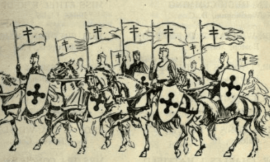
The Knights of Dutchess County
Each June marks the end of another academic year, and students throughout Dutchess County celebrate advancements in their education. A display of pins donated to the Dutchess County Historical Society by Marjorie Mangold in honor of her late husband reminds us that just over a century ago thousands of students shared this excitement through a unique end-of-the-year ceremony: investitures of Health Knighthood. The pins in the Mangold Collection, brought together by Harold Mangold Sr. and Jr. depict intriguing scenes of knights charging into battle or fighting dragons. On the border of each rests the phrase “Modern Health Crusade.” Once proudly worn by student “Crusaders” throughout the county, these pins speak to a complex history of children’s health education. The Modern Health Crusade (MHC) was a youth health education curriculum that began in 1915 to combat the spread of tuberculosis. The program lasted into the early 1930s and was taught in schools across the nation, Europe, and Asia. The Crusade succeeded in America during WWI, with one million students enrolled by 1919. Its popularity grew in the post-war period, climbing to well over three million active participants by 1923. First developed by National Tuberculosis Association (NTA), the HMC sought to cultivate hygienic and moral values. These values, deem by the HMC “health knighthood” or “health chivalry,” intended to mold children into good citizens able contribute to wartime preparedness. The movement’s founder Charles Mills deForest (1878-1947) called this the “Crusade Method of Health Training.” Above Left: Knight Pin; Depicts King Arthur knighting a Health Crusader with Camelot in background. Above is the National Tuberculosis Associations cross, a “K” for “Knight,” and a Health Cross. Above right: Squire Pin; Shows a horse and squire bearing a shield with the cross of the National Tuberculosis Association. Health Cross floats above. DeForest spent his career campaigning for children’s health education; he served as a field secretary for the American Red Cross Seals Division and the NTA. Throughout his work, he regularly noted that children struggled to adapt hygienic practices. DeForest posited that “good health” depended on students’ self-motivation. Therefore, he envisioned a curriculum that appeared as “fantasy game” which engaged children from kindergarten to 8th grade, charting their progress each term. In no less than four years, students moved through different knightly ranks. Beginning as a squire, a student became a Knight, then a Knight Banneret, and finally a Knight Banneret Constant. Advancement could only be obtained throughout the school year by the completion of “Crusade Chores.” These tasks, listed on a proscribed chart, ranged from hygienic activities such as “I washed my hands before each meal” to more aesthetic ones such as maintaining trimmed nails or hair. Each day the program required parents and teachers to sign off that the child had done these duties. “Chivalrous” students completed seventy-two chores a week, and after a year of living “chivalrously,” they were awarded the next rank. While deForest’s program was rigorous, he truly expected children to enjoy participating. In an article defending his methodology, he noted that, “Every child likes to play… He likes to play that he is grown, and to do something worthy of a grown-up.” Through play, the program reinforced “good health” with a tangible system of growth. “Health chivalry” sought to foster play through material rewards and competitions. This emphasis on recreation distinguished the program’s curriculum from other educational systems at the time. It attempted to alter methods of teaching rather than the information taught. A manual for teachers and nurses published by the NTA outlined how to include fantasy stories, songs, and crusade pageants. These elements culminated in the knighting ceremony, during which successful students moved to subsequent ranks. Dressed in handmade crusading outfits, students would gather singing Health Crusader songs as the teacher knighted students. During these celebrations, pins—like those in DCHS’s collection—were attached to the knight and to be worn during the following school year. Left: 1920 Knight Banneret Pin; Image of a mounted knight, holding the standard of the knight banneret with the letters “K” and “B” on either side of the Health Cross, the horse bears the National Tuberculosis Cross on flank. This appeal to competition was expressed in the schools and communities. The pins intentionally served as a physical sign of students’ position over their peers. As the NTA outlined, this disparity created a “visible daily reminder” of individual accomplishment which should motivate the student body to work harder. The MHC also granted students the opportunity to compete directly in national and inter-city tournaments. Schools in Beacon, Hyde Park, and Rhinebeck were the first in the nation to sign up to participate in the 1919 inaugural National Health Crusade Tournament where students participated in health and physical fitness drills. No Dutchess County school won the coveted pendant that year, but they continued to compete in the following tournaments. Indeed, the Health Crusade found a particularly strong voice in Dutchess County. An article a November 1919 issue of the Miscellany News—Vassar College’s student-run newspaper—noted that on the 25th of October, students from public and private schools in Poughkeepsie met at the Liberty Theater to watch a showing of the “Modern Health Crusade” movie. The children were so stirred by the film that the police present need to uphold “the standards of law and order.” The excitement of the students speaks to the program’s effectiveness. Its national success, in part, was propelled by Vassar College President Henry Noble MacCracken (1880-1970). MacCracken founded the Junior Red Cross of America in 1917. The new organization soon partnered with the NTA, heavily promoting the Modern Health Crusade. Under MacCracken’s leadership, Vassar College became a primary mode of outreach. A notice in the Poughkeepsie Eagle from February of 1919 remarked that Rhinebeck schools received lectures about the Crusade from Vassar’s Four-Minute-Girls, mirroring the wartime Four-Minute-Men whose spoke about war effort. Dutchess’ Collegiate involvement also spread nationally as NTA targeted Vassar seniors for executive positions at their headquarters in Philadelphia and as nurses throughout the country. By 1930 however, deForest and
Posted in: Decoding Dutchess Past, Decoding Dutchess Past, For everyone
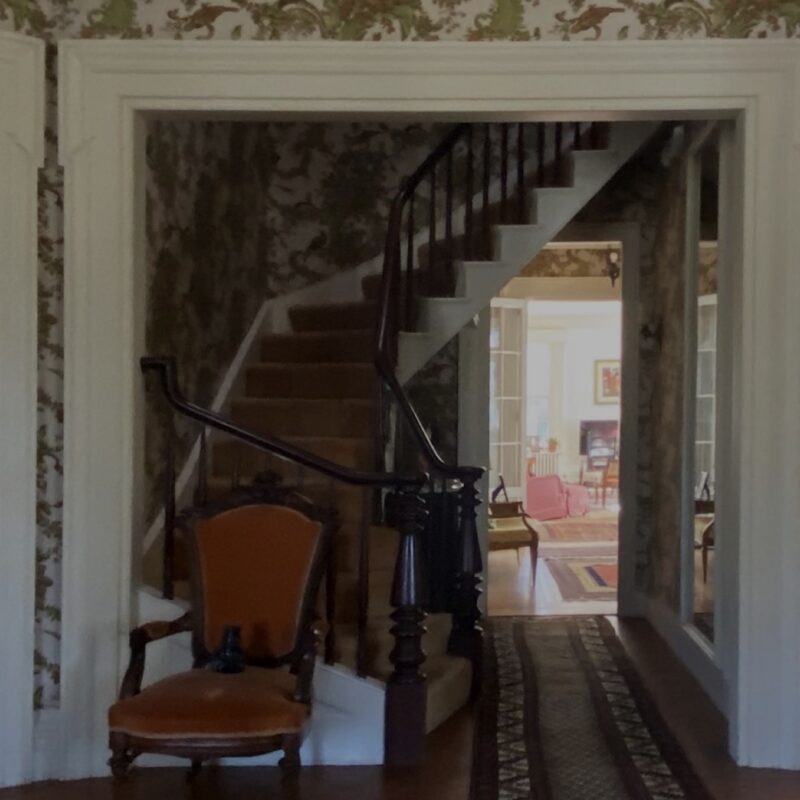
Virtual.2024 Awards
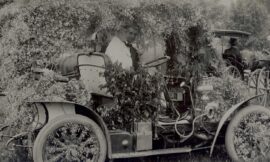
The Automobile in Dutchess County
A talk by DCHS Trustee David Turner How the Automobile Changed the Hudson Valley: a View Through Postcards New in Collections: From the recently acquired Mangold Collection, photographs of commercial trucks in Poughkeepsie ca. 1918.
Posted in: For everyone
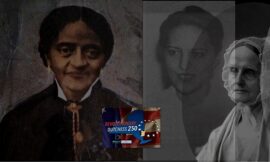
Unfinished Revolution
Within these pages, DCHS, with the broader Dutchess County history community, is looking to develop an understanding of these kinds of questions that will evolve into a permanent online exhibition and educational resource. When have members of your community advocated for liberty and equality? How have people with power responded? How has the process of becoming “a more perfect union” evolved in your community? Can you name contemporary examples of how the dialogue around liberty and equality is being carried out in your community today?
Posted in: For everyone

Anniversaries
Black Voices in Freedom’s Pursuit: America’s Revolutionary War “What to the slave is the 4th of July?” At the heart of Frederick Douglass’s pointed question was the unmistakable irony that the country based on the 1776 premise that all are created equal, by the time of its 1788 Constitution had created the so-called three-fifths compromise, literally defining inequality. 2024 SEPTEMBER 16, 2024200th Anniversary of the Arrival of the Nation's Guest, the Marquis de Lafayette. 1824 Visit of Lafayette: NYS Was a Slave State As the nation’s guest, the American Revolutionary War hero from France, the Marquis de Lafayette, stepped onto the dock at the foot of Main Street, Poughkeepsie in the early morning of September 16, 1824. Newspapers reported it was the largest gathering of men, women, and children — civilian and military — in the village’s history. We know that among the cheering public would have been persons of color, many of whom were enslaved as NY State would not abolish slavery until July 4, 1827. Three years earlier, in 1821, New York instituted a property requirement for a man to be eligible to vote that applied only to men of color. They would have been aware of Lafayette’s outspoken advocacy of the abolition of slavery, his collaboration with a former enslaved man who became a spy and American war hero, and his specific actions freeing the enslaved. The emerging program, DCHS Horizons: the Marquis de Lafayette, will culminate in at event on the 200th anniversary at Revel 32, Cannon Street, Poughkeepsie on the morning of Monday, September 16, 2024. More on that in time. CLICK FOR DCHS HORIZONS: LAFAYETTE 1824 TO 2024 2025 DECEMBER 31, 2025250th Anniversary of the Death of General Montgomery 1775 Death of Montgomery: Whose Freedom? The tragic December 31, 1775 death of Rhinebeck’s General Montgomery in the Revolutionary War is captured in this iconic painting by Trumbull. The event came to symbolize the profound personal sacrifices made by all levels of society during the war, on behalf of freedom. But whose freedom was being secured? In the 1940 Rhinebeck Post Office murals painted by local artist Olin Dows, we see a depiction of an enslaved man making bricks for Montgomery’s estate, Grasmere, which stands today. Also shown here, the Rhinebeck census for 1820 indicating that the widowed Janet Livingston Montgomery, who never remarried, had 12 enslaved men, women and children at her home in Red Hook, Montgomery Place. CLICK FOR DCHS HORIZONS: REV 250 2026 JULY 4, 2026The premise and promise that all are created equal began a series of smaller revolutions continue today. 1776 Premise "All Created Equal" The great abolitionist leader, author, and speaker, the former slave Frederick Douglass, famously penned a critique entitled, “What to the slave is your 4th of July?” The 1776 premise that “all are created equal” was followed by the adoption of a US Constitution that literally defined inequality, stating that slave states like New York, could have 3/5ths of the Black population counted toward Congressional representation and the Electoral College for electing the US President. Poughkeepsie, of course, was host to the New York Convention in July of 1788, at the site of the current court house, when New York State, with the smallest margin of any state, agreed to join the United State. 2027 July 4th, 2027200th Anniveersary of the end of slavery in New York State. 1827 NYS Abolition & the Deadly Period of the Divided House The relief of the end of slavery in New York State was greatly tempered by the purely racially motivated voting restrictions requiring property ownership, and the fact that the United States was entering a period of decades of what Abraham Lincoln correctly described as a divided house that could not stand. With a “free north” and a “slave south,” Dutchess County became and important route on the Underground Railroad, with an inland route of Quaker homes, and a river-oriented route that relied more on the Black community that worked in the transportation industry as chambermaids at hotels, like the Exchange Hotel, shown here, or men w boatsmen and waiters on steamboats. 2028 April 7, 2028180 years of New York State's Women's property act. 2028 Above image: The Town of Milan 1873 property tax log reflects the fact that Almira Jackson owned 108 acres of farmland independent of her husband was only possible because of the the NY State law passed 25 years earlier that allowed such a situation. Prior to this, a married woman could not own real estate with independent rights, they were transferred to the husband. The home shown is that of Sally Lawson who came to own the largest lot on Oak Street Rhinebeck (three lots wide) in the decades in the run-up to Civil War.
Posted in: For everyone
